CRN Exclusive: Michael Dell On Partner Sales Growth, Fighting Public Cloud Lock In And The IoT 'Explosion'
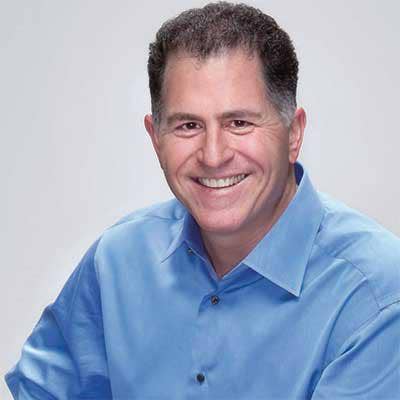
Great Expectations
It's been nearly 10 months since Dell Technologies Chairman and CEO Michael Dell completed the $58 billion landmark acquisition of EMC, and so far the combination has surpassed his expectations for growth and has been more popular than expected with partners and customers, too.
In an interview with CRN, Dell said he has "seen tremendous validation of the strategy we put in place," as customers and partners turn to Dell Technologies and its family of companies – Dell EMC, VMware, Pivotal, Virtustream, RSA and others, when they consider which vendors they'll place their bets with in the future.
Customers, Dell said, are aggressively digitizing their businesses, and partners have an opportunity to take advantage of that move as long as they stay ahead of the curve. "The companies that thrive are the ones that learn how to add value in the new relevant things," he said.
Still, the market's move to the cloud isn't tidy, and Dell is committed to supplying a "multi-cloud world" where businesses keep almost all their data on premises and assign the rest to the Software-as-a-Service (SaaS) platforms, managed services providers, and the public cloud, which Dell said has proven expensive and "is trying to create a lock-in" in many cases.
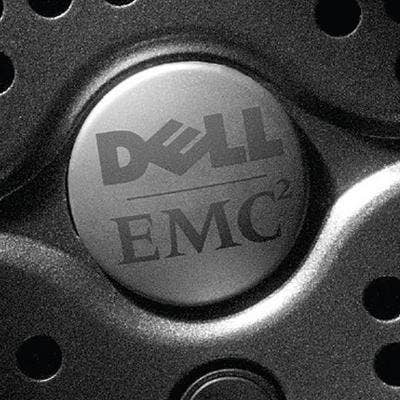
What's been the biggest surprise as you have combined Dell and EMC?
The biggest surprise is that we haven't had a lot of surprises. The really good news from our perspective is that the revenues and the growth that's been coming in has been much more than we planned. The reaction from partners, distributors, end-user customers around the world has been quite positive. If I go back to before we announced the combination – we announced it in October of 2015 almost two years ago – we hoped that there would be this positive reaction, but we didn't know for sure. Through the announcement, all the integration planning, and then the shareholder vote and the official combination and now standing up the business, we've just seen a tremendous validation of the strategy we put in place, which is to say No. 1 in everything all in one place.

What has been the reaction from partners and customers?
When you combine Dell and EMC, VMware, Pivotal, Virtustream, RSA, SecureWorks, Boomi, Dell Financial Services, etc., the reaction has been extremely positive. Whether it's partners or distributors or the end customers figuring out who they're going to bet on for the future, they look at the strength of the portfolio, and that helps us a lot. I'm very pleased, not satisfied. In the first quarter, our global partner revenue growth was double digits, which is pretty hard to do at this scale. The momentum is very strong. We continue to add lots of customers. We had our largest participation ever at Dell EMC World in May. I'm feeling very good about the progress.
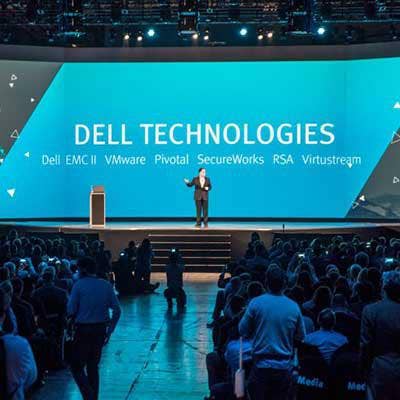
What kind of big impact solutions are being brought to bear from the combined Dell Technologies?
We can share all kinds of great examples in terms of high performance computing and advances in the medical field that are impactful and special. When I look at what's been going on commercially, what I see is we had a lot of the pieces as individual companies, and those were operating well. These were very good businesses. When we put them together, the combined effect is even more powerful. What we expected were cross-selling opportunities where customers that were buying one or two pieces of our portfolio would increasingly want to buy everything from us. That's what we're seeing.

Are customers more interested in public cloud, private or hybrid?
More and more people are figuring out that it's a multi-cloud world. The cloud is great, but the cloud is not a place. Cloud is a way of doing IT. Some of the early adopters that ran to the public cloud have figured out that it doesn't work so well for everything, and it can be rather expensive for some things
This idea of a multi-cloud world says there will be applications and workloads that are appropriate for the public cloud, and some that are appropriate for Software-as-a-Service, some that are appropriate for managed services, some appropriate for on-premise.
When you automate and modernize the on-premise system, especially for the predictable part of the workload, which for most companies is going to be 85-90 percent, that on-premise system is extremely competitive. Another thing they've realized is that many of the public clouds are effectively trying to create a lock-in. That can also be pretty expensive.
Pivotal's Cloud Foundry is growing quite rapidly because it creates a cloud-neutral way of developing cloud-native apps and running them in any public cloud, or on premise.

Has that given a boost to Dell Technologies' own consumption based models and financing programs?
We've continued to see the usage of Dell Financial Services -- the penetration rate of Dell Financial Services – rise all across the world. The consumption models and the ability to deliver products as a service, whether it's through Dell Financial Services and our consumption models, or Virtustream, all of that adoption is going quite strong.

What can the channel do to drive more Dell sales growth?
The way we designed our program, we put clear incentives around the things that represent the biggest opportunities and require additional skills and expertise. Having been around this world for a long time, the companies that thrive are the ones that learn how to add value in the new relevant things.

Is there somebody who heads up R&D across all the pieces of Dell Technologies at this point?
We're investing roughly $4.5 billion a year in R&D. There was a list that came out a week or so ago that showed we were No. 17 in terms of all patents among global companies, not tech companies, all companies, so we have an incredible innovation engine. We have certainly big R&D teams all over the world. We've got our CTOs working together, for example, on the topic of AI, machine learning, machine intelligence. I've been working with our R&D leaders from across the business on that topic. Do you bring them all together under one person? Not really. If there was such a person, that would be me, but these teams are highly innovative, they're doing great work and we don't want to create an overly bureaucratic, centrally controlled thing. We want them to be innovating, and where it makes sense to work together, we absolutely do that.

Are customer buying patterns being driven more by cost cutting or revenue generation?
Customers are leaning into the digital transformation, but they're not necessarily getting big budgets to do that. They're drawing on efficiencies in the IT and infrastructure to be able to get that. The good news is there's a lot of opportunity to do that. When we talk about automating and modernizing the data center, that's a funding mechanism for the digital transformation. It seems like every day or so, there's another security challenge, so that's a big spending priority for companies, particularly as they connect everything up. Nobody wants to be a victim of a cyber challenge. There's aggressive spending there as well. Companies are focused on growth, and expansion, and new customers, new adjacencies. New technology is the engine that helps them get there.
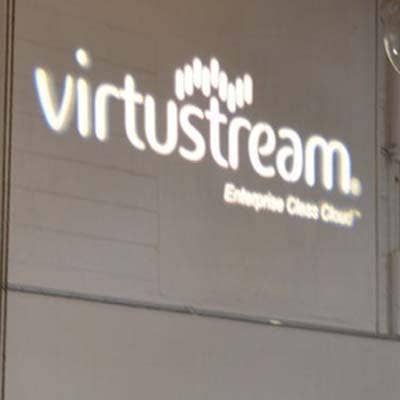
How big do you think Virtustream can get in the next few years?
Virtustream leverages all the VMware technology, and they're linked quite closely. We laid out our Virtustream partner program, and the growth in Virtustream has been very strong. The growth was about 100 percent last quarter. For those mission-critical applications like SAP, Oracle, some of the health care systems, Virtustream is really well-positioned and a really great partner opportunity.
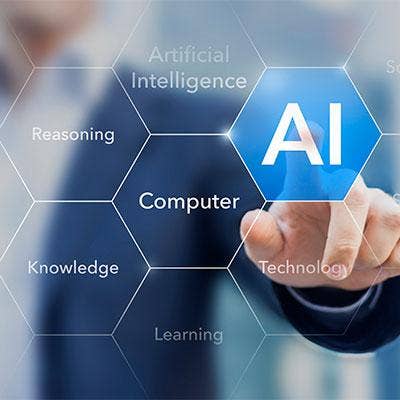
What are you seeing in terms of the opportunity for Dell and partners around virtual reality and artificial intelligence?
Artificial intelligence, machine intelligence, machine learning, these are really interesting new areas of computer science. There are two big components to how you make machine intelligence work. The first component is you have to have algorithms and computing power and GPUs and specialized processors and smart people to program them to be able to create the intelligence. That's a critical ingredient. The second key ingredient is the data. If you have all the first components, but you don't have any data, your machine learning can't learn anything. This is why you see the consumer internet companies really jumping all over this. They have enormous amounts of data. In the business and enterprise world, a little over half the mission-critical data is stored in Dell EMC systems. The growth in that data is really quite amazing. It's all the things you're familiar with: the Internet of Things, the digital transformation. All these new connected devices are generating enormous amounts of data across all kinds of businesses and society.
And you're seeing traction with customers?
We have tons of our customers that are standing up these projects related to AI, machine intelligence, machine learning, driven by the data that's being generated, and a tremendous amount of it stored in our systems. There's tremendous growth in unstructured data. Isilon is a tremendous platform for unstructured data. We're also doing a ton on the compute platforms because of the use of specialized processing technology. You've got CPUs, GPUs, and we've been investing in a bunch of new companies that have next-generation microprocessor technology to deal with all that data.
So there's a strong hardware play here, too?
When people think about data, the first thing they think about is usually real-time data. That's really important, but there's two other critical types of data that are actually much, much larger. When you get your machine intelligence up and running, you need these two types. You need historical data, and steaming data. The number of these devices and products are just creating incredible quantities of data. It's a super interesting and exciting area. It's been said that software is eating the world. Well, AI and machine intelligence are eating software. All of this stuff has to run on something. AI doesn't run on AI. Software doesn't run on software. It all runs on hardware, so there's a hardware element here to all of this. It's a big area of focus for us.
Is IoT happening as fast as people say it is? How big is that opportunity?
I'm seeing it happen. Pivotal is a platform that companies adopt in order to implement a digital transformation, the Internet of Things, the ability to connect to all these devices and use that intelligence to make those products and services better and make their company better. We're seeing very strong growth there. The growth in the number of connected devices and data is absolutely happening. It's from the very, very large companies all the way down to the consumer. If AI is your rocket, the data is the fuel for your rocket. If you don't have any data, your AI can't do anything. If you go back five years ago or 10 years ago, the amount of data wasn't very much. If you had AI, you didn't have enough data to make your AI very smart. Now you have this explosion of data and the computing and machine intelligence power and all the innovation going on there. That creates tremendous opportunity.